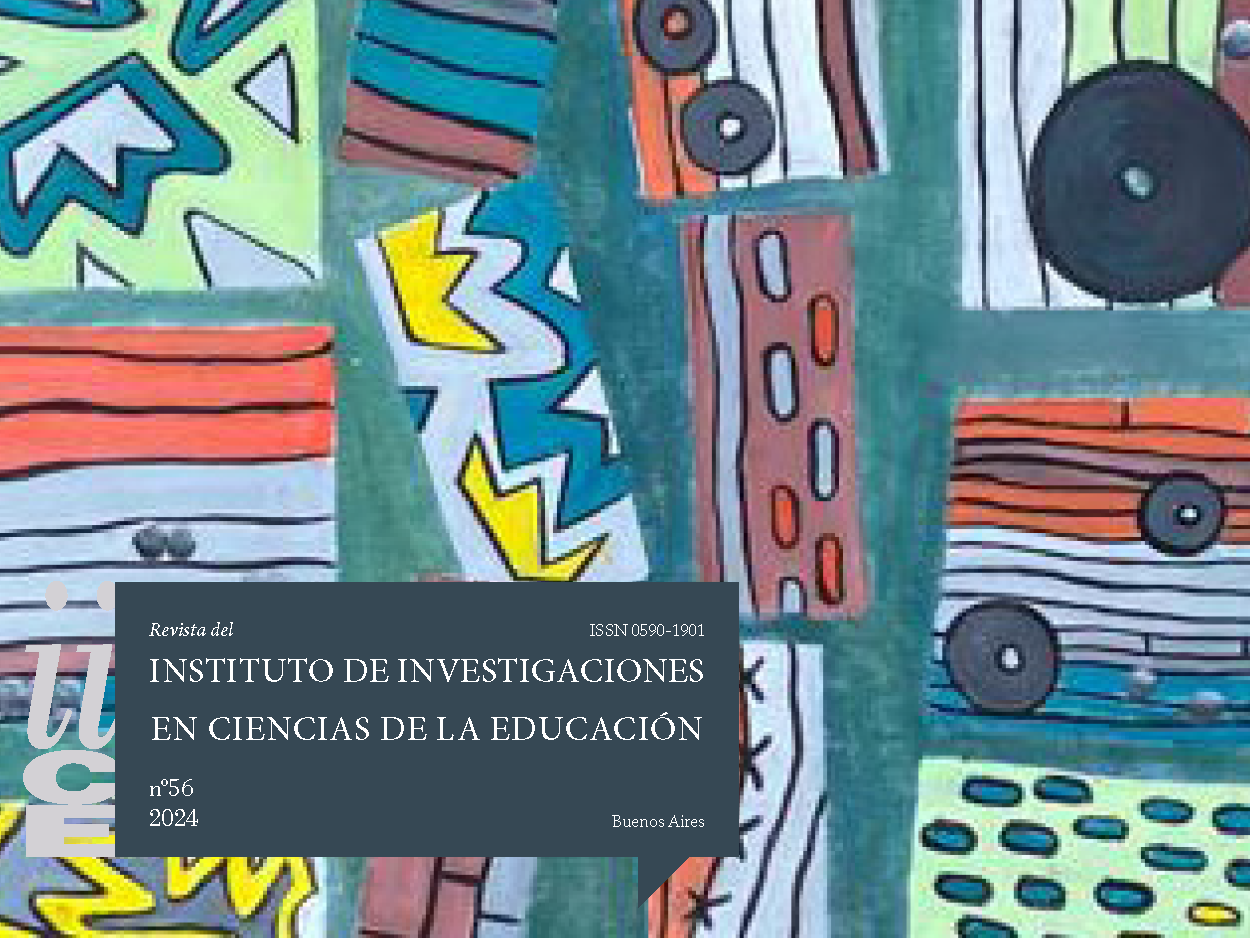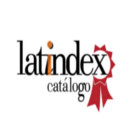“Multiverse in the classroom”
Mutations in the teaching and learning space from the use of different technological environments in the Higher Level
Abstract
This article gives an account of the analysis of the practices carried out over two years, in different teachers of Teacher Training Institutes of the Province of Buenos Aires, in which didactic strategies were implemented that put into play the use of different learning environments, as a complement to the traditional physical classroom, to teach how to teach. The objective of this research refers to the analysis of aspects related to the use of technology and social networks, including Tik Tok, and the conformation of the teaching and learning space as a multispace in which physical and virtual environments coexist. Starting from an inductive logic, an exploratory-descriptive study was carried out that sought the generation of categories of analysis, in order to address and understand the phenomenon, taking into account the manifestations of future teachers, through observation of classes and in-depth interviews. The grounded theory design was used and we worked with the constant comparative method and theoretical sampling. The use of Tik Tok was proposed as the resource that provided the best results in terms of student motivation, concretion of original didactic sequences to be implemented in teaching practices and optimization of results of grades obtained in the space studied (Audiovisual Media, ICTs and Education / Teaching with Technology), adding new contributions to the existing theoretical frameworks on the subject.Downloads
References
Aguilar Mere; G. A.; Garzón Balcázar, J. M.; Peereira Haz, G. del R. y Arteta Rivas, M. M. (2023). Uso de Tik Tok como una herramienta eficaz de aprendizaje en la educación superior. Revista Reciamuc, 22-30. Ecuador: Saberes del Conocimiento.
Alzahrani, A. et al.. (2021). The impact of using TikTok on EFL learners’motivation and participation in English language learning: A case study at Najran University. International Journal of Emerging Technologies in Learning (iJET), 16(4): 69-85.
Bermejo Sánchez, E. (2022). Impacto de la red social TIKTOK: influencia como medio de comunicación desde el confinamiento por COVID-19. Trabajo de grado. Pol.Con., edición 67, vol. 7 (2). Universidad de Sevilla. Disponible en http://polodelconocimiento.com/ojs/index.php/es
Bermejo Sánchez, E. M. (2021). Impacto de la red social TikTok: Influencia como medio de comunicación desde el confinamiento por COVID-19. Trabajo de Fin de Grado. Universidad de Sevilla. Recuperado de https://idus.us.es/handle/111441/126185idus.us.es+2
Briskman, J. (2022). Sensor Tower's Q4 2021 Data Digest: Worldwide App Downloads Totaled 36.1 Billion Last Quarter. Sensor Tower, Blog, enero. Recuperado en https://sensortower.com/blog/q4-2021-data-digest
Choy, S. y Ng, K. C. (2020). Exploring the use of TikTok in higher education: A preliminary study. Education Sciences, 10(8): 211.
Coslado, Á. B. (2012). Educomunicación: desarrollo, enfoques y desafíos en un mundo interconectado. Foro de educación, 10(14): 157-175. Recuperado de http://bit.ly/3CgYsYU
Data AI (2022). State of Mobile 2022. Blog. https://www.data.ai/en/go/state-of-mobile2022/
Datareportal (2021). Digital Global Overview Report. Recuperado dehttps://datareportal.com/reports/digital-2021-global-overview-report
Data AI (2022). Esencial TikTok Stats and Trends 2022. https://datareportal.com/reports/digital-2022-global-overview-report
Dunia, A. (26/10/2020). Docentes en TikTok: una nueva forma de reinventar la enseñanza. Educación 3.0. Disponible en https://bit-ly/2RXd7GS
Glasser, B, y Strauss, A. (1967). The Discovery of grounded theory: strategies for qualitative research. Nueva York: Aldine Publishing Company.
Guber, R. (2004). El salvaje metropolitano. Reconstrucción del conocimiento social en el trabajo de campo. Buenos Aires: Paidós.
Iturriaga Granado, M.; Martínez Bureba, S.; Sáez López, Á.; Sánchez Cañada, M. F.; Sedano Labrador, E. y Tomé Cámara, E. (2021). Tik Tok como herramienta educativa en el aula. Trabajo de investigación. Burgos: Universidad de Burgos.
James, W. (1895). Is Life Worth Living? International Journal of Ethics, 6 (1): 1-24. https://www.jstor.org/stable/2375619?seq=1
Li, Y.; Wang, Q. y Huang, D. (2021). Using TikTok as a tool to enhance college students’ Mandarin learning motivation and engagement. Journal of Educational Technology Development and Exchange, 14(1): 1-16.
Serres, M. (2013). Pulgarcita. 1º ed. en español. Buenos Aires: Fondo de Cultura Económica.
Sirvent, M. T. y De Angelis, S. (2011). Pedagogía de Formación en Investigación. Cuadernos de Educación, 9(9): 231-244. Recuperado de https://revistas.unc.edu.ar/index.php/Cuadernos/article/viewFile/835/787
Sirvent, M. T. y Rigal, L. (2020). Metodología de la investigación social y educativa. Diferentes caminos de producción y conocimiento. Manuscrito en proceso de revisión.
Siveiro, M. (2023). PrimeWeb [blog]. Recuperado en https://www.primeweb.com.mx/tiktokestadisticas Consultado 18/07/2023.
Strauss, A. y Corbin, J. (2002). Bases de la investigación cualitativa. Zimmerman, E. (trad.). Antioquía: Editorial Universidad de Antioquía.
Taylor, S. J. y Bodgan, R. (1987). Introducción a los métodos cualitativos de investigación. La búsqueda de significados. Barcelona: Paidós.
Vintimilla-León, D. E. y Torres-Toukoumidis, A. (2021). Covid-19 y TikTok. Análisis de la Folksonomía social. Revista Ibérica de Sistemas e Tecnologias de Informação, (E40): 15-26. Recuperado en https://bit.ly/3En2fpq
Vizio, P. (2022). El multiverso de la lectura en pantallas. Espacios alternativos y nuevas habilidades lectoras en los actuales entornos digitales. Revista Ciencias Sociales y Educación, 11(22): 250-275. https://doi.org/10.22395/csye.v11n22a11 Recuperado de https://revistas.udem.edu.co/index.php/Ciencias_Sociales/article/view/4173
Zabala-Shigui, R. I. y Banda-Casa, M. A. (2022). Tik Tok como herramienta educomunicacional en los estudiantes de bachillerato del cantón Latacunga. Pol. Con., Nº 67, vol. 7 (2). Recuperado de https://dialnet.unirioja.es/servlet/articulo?codigo=8331415











